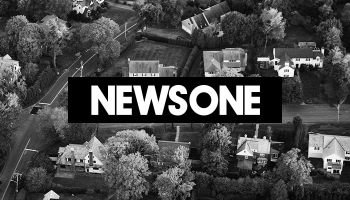From October 14th, NewsOne — as well as other invited journalists — will be on location in the West African country of Cameroon to see why the country is on the rise. In the coming days, learn about why Cameroon is referred to as “Africa in the Microcosm” with a number of features and reports that will ultimately connect, inform, and bond the African diaspora. Enjoy!
LIMBE, CAMEROON — (NewsOne) Tourism has been a priority of the West Central Africa country of Cameroon since 1974, when then-President Ahmadou Ahidjo established the General Delegation of Tourism. Since then, officials have attempted to get the message out about why Cameroon should be a premier destination for tourists worldwide.
Cameroon, which is nestled between Nigeria in the West, Chad in the North, and the Republic of Congo in the East, boasts numerous national treasures, such as the tallest peak in West Africa with Mt. Cameroon, black volcanic sand beaches off the coast of Limbe, the storied Pygmy people, Waza National Park, and the once-powerful Mandara Kingdom from the 1500s, whose distinguished architecture still stands.
RELATED: Will Cameroon’s Pygmies Become A Relic Of The Past?
Incumbent President Paul Biya likes to refer to Cameroon as “Africa in the Microcosm” for its varying cultures and geography and rich history. Indeed, one look at the mountainous region of the Western Highlands, the rainforests in the South, the Muslims in the North, and the bustling cities of Douala and Yaounde underscore a diversely robust country that has a lot to offer.
Head of Communications in the Ministry of Tourism and Leisure Serge Eric Epoune told NewsOne the context for tourism in Cameroon, “We have lived in a very big economic crisis for more than 10 years. From 1989 to 2000 and even 2001. There were small jobs, but no great investment. When there is not investment, then there is no jobs, no growth. It is now that the powers have decided to invest in the country. That’s why you see the deep sea port of Kribi, which would be one of the maritime platforms of Central Africa.”
A deep sea port is being built by the Chinese in Kribi. Epoune explains what impact this will have on the country, “A port for Equatorial Guinea, a port for Gabon, a port for Cameroon, a port for Chad, a port for Central Africa. It will be a very big platform for development. So in two to four years, you won’t recognize this place.
“[Our tourism program] is a huge program that has been around for at least 20 years. Just because of the economic situation, We could not carry it out, but we are doing it now with the help of our partners, investors, China, France, and if the U.S. wants to come. If England wants to come, then there is a place for everybody.”
Check out some of Cameroon’s top destinations to travel to here:
Lobe Waterfalls
Nestled in the coastal town of Kribi, which is about 93 miles from Douala, is the Lobe waterfalls. Lobe has the distinction of being the only waterfall that empties in to an ocean. As a visitor, one can get in to a canoe for an up close look at the natural wonder, with its fresh air, clusters of foam that resemble soap bubbles, and its calming rumbling. Afterward, tourists can treat themselves to ornate ankle bracelets, necklaces, waist beads, earrings, and art at the adjacent market. The destination also boasts an outside dining area, where visitors can eat fresh shrimp with plantain, fried banana.
Tourism trainer Aldolphe Simo Kouam discussed the waterfall, “The waterfall is a unique waterfall. It is the only one. About 10,000 people come here in the dry season and about 100 people per day. People should come to Cameroon because Cameroon [offers a lot]. We have the sea, we have the forests, we have the safari. So all that you have in each country [in Africa] is in Cameroon. When people come to Lobe, they can canoe to the sea, they can walk on the beach, they can swim, they can watch wildlife.”
Tea Plantation Factory
The Tea Plantation Factory is located in Limbe on acres and acres of tea leaves with a remarkable mountainous backdrop. The plantation manufactures tea for CTE Tea, Cameroonians’ premier tea company. Visitors can take a tour of the factory watching the leaves get sorted, ground, and dried. At the end of the tour, tourists are rewarded with a cup of hot tea and biscuits to savor the final product.
Limbe Zoological Garden
This zoo has a wide array of primates, such as gorillas and chimpanzees, which have been illegally detained and traded. Visitors can also see cages that the animals lived in before their rescue as well as a moody crocodile and an imposing python.
Botanical Garden
Started by German horticulturers to grow medicinal plants, the Botanical Garden, is the place to see nearly 1,500 medicinal trees. The amphitheater, though, is a nice treat, because traditional dances in an unexpected clearing that is buttressed by dozens of trees are often performed there.
Watch the traditional dancing at the Botanical Garden here:
Bimbia Slave Trade Site
Just as Senegal and Ghana have Goree and Elmina, respectively, Cameroon has Bimbia, the slave port that was active during the infamous Atlantic Slave Trade. Those who want to become educated about the African captive’s experience are immediately thrown in to the era when they are made to walk the same path that the unsuspecting victims walked. Tragically, Africans were drawn to the area because of promises of work at an oil factory that was supposedly located there. Instead, they were forced to remain high up in the mountains until they were loaded on to slave ships…and the rest is history. While you can witness a reenactment of the enslavement of Africans at the site, a moment of silence is all that is needed to either bring one to tears or make one’s skin crawl.
Mefou Primate Sanctuary
In order to counter the illegal pet and bush meat trades, the Mefou Sanctuary takes in orphaned baby primates in order to protect them from harm. While walking through a number of nature trails, one can see chimpanzees and gorillas. The Sanctuary is effective in maintaining an authentic environment for these rescued primates, and thankfully, the word zoo doesn’t even come to mind here.
Ebogo Village
Located in the town of Mbalmayo, Ebogo Village is a breathtaking respite from the hustle and bustle. After traveling about five miles on a dirt road, one will arrive at the village of Ebogo. The village boasts an outdoor restaurant that serves melt in your mouth avocado, kanga fish, and fried plantain and potatoes. There is lodging that overlooks Lake nyong, with a master, large windows, and a porch. And while the food and lodging appear to be both the icing and the cake, the lake is a heart stopper with mangrove trees, leaf canopies, and a bird soundtrack that is a sure ticket to happiness.
SEE ALSO: African Association Officially Kicks Off Tourism Conference In Cameroon
Abena Agyeman-Fisher, NewsOne’s Senior Editor, is attending the Africa Travel Association’s World Congress in the Republic of Cameroon as part of a delegation that is hosted by Arik Air and the Ministry of Tourism & Leisure of the Republic of Cameroon, and coordinated by the ATA.

















